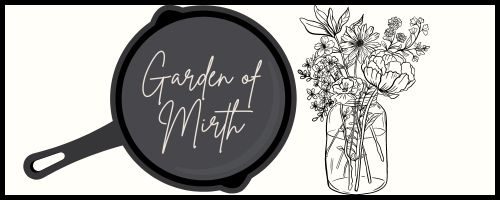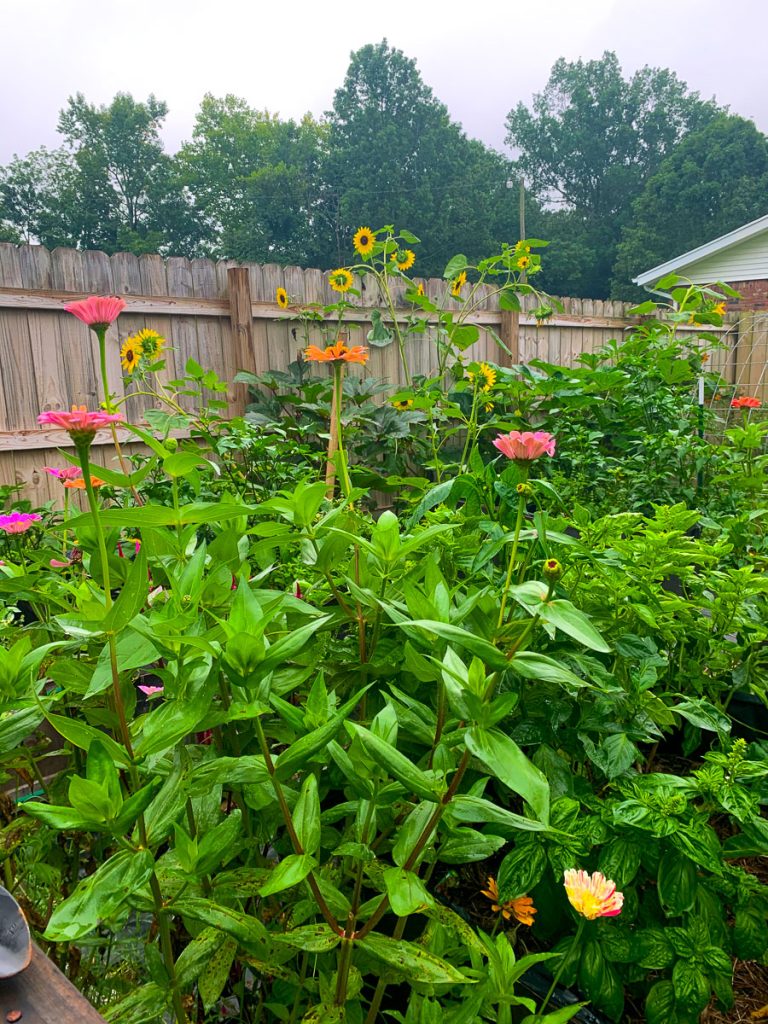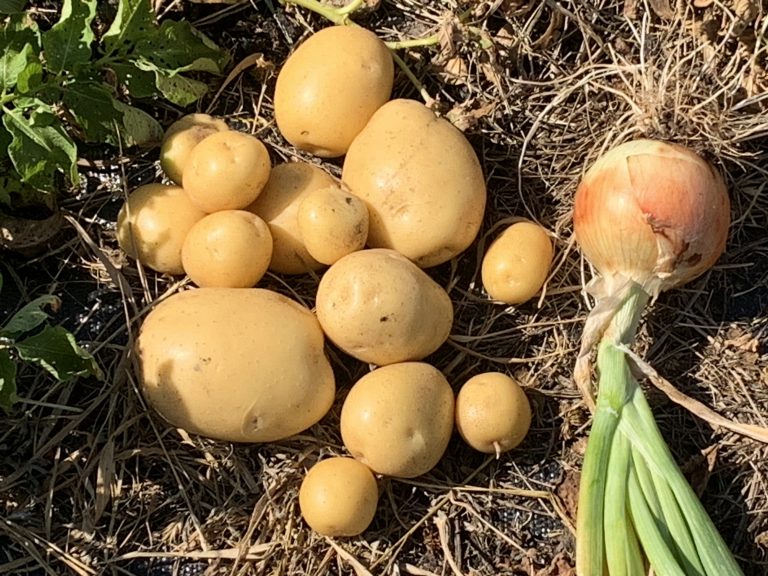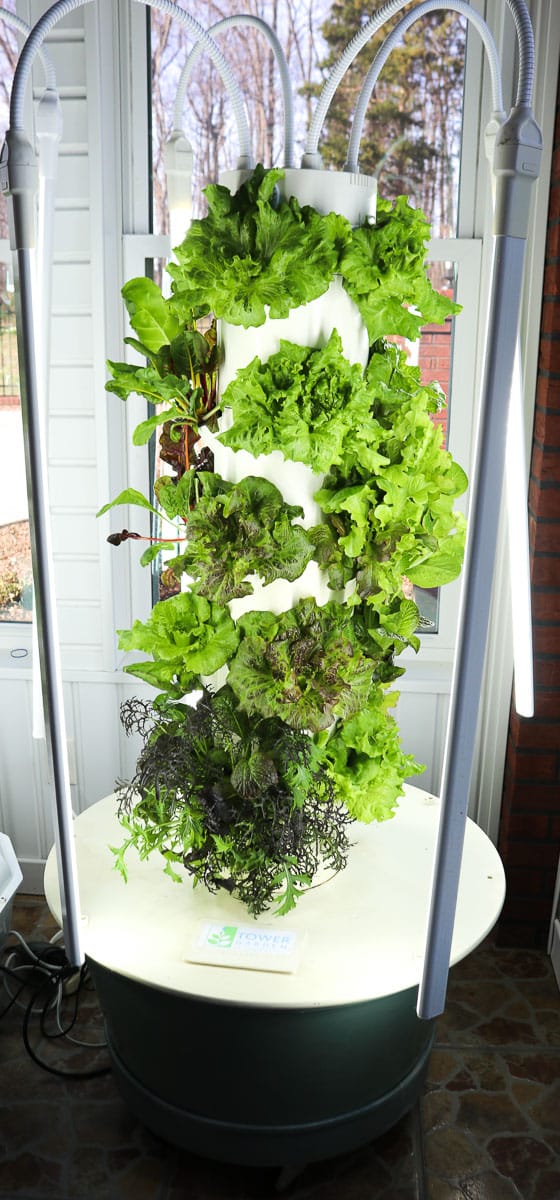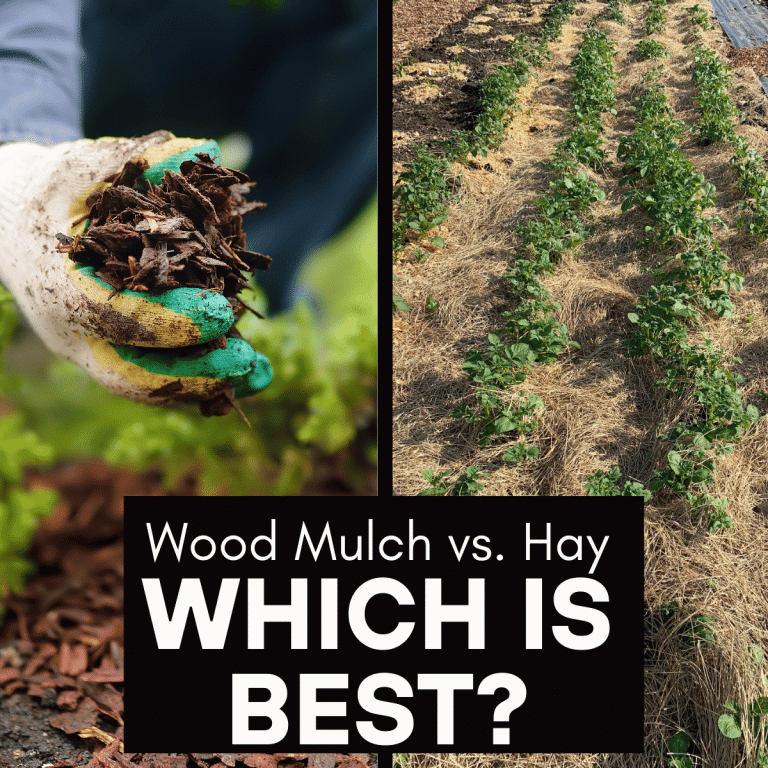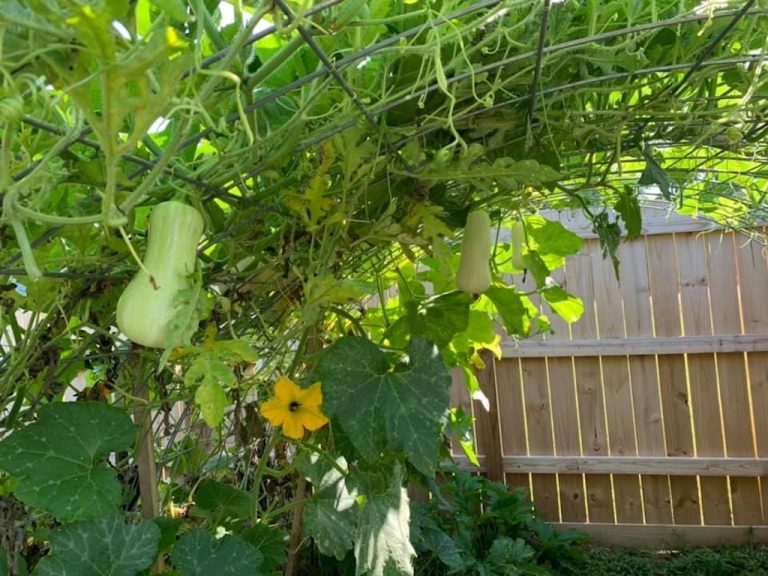How to Garden With the No Till Ruth Stout Method
This is a simple, no nonsense, no till method of gardening. The Ruth Stout Method is perfect for the lazy gardener as it is more doable for most people because it takes less work, less materials, and less “good luck” to have a successful garden.
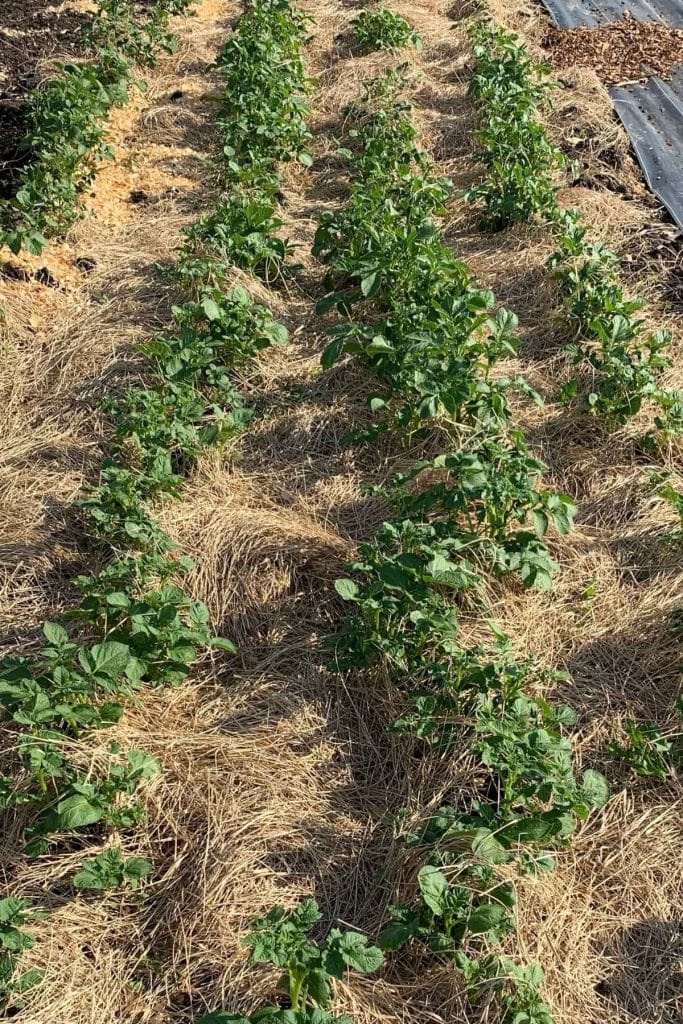
The Ruth Stout Method doesn’t require fancy raised beds, drip irrigation, or even a compost pile! Her method only requires one thing: mulch.
Who Was Ruth Stout?
Ruth Imogen Stout or the “Mulch Queen” was an American author and a pioneer of the “No Till” gardening method. Ruth Stout began gardening later in life after moving to the country with her new husband in her forties. She wrote books about her gardening methods and appeared in well known publications such as “Mother Earth News”.
Ruth lived by a simple motto- She didn’t do anything she didn’t want to do. She lived her life as she pleased, waking when she wanted and working when she wanted. She applied the principle of “work smarter not harder” to both her garden and everyday life.
She tried many traditional methods of gardening before finding success in her no till methods. Ruth struggled using those conventional methods because she was always dependent on something else such as fertlizers, pesticides and rain fall or dependent on someone else, namely the plowman.
After one too many times of having her garden planting delayed by a plowman who didn’t till her garden on time, she decided there must be a different way. She observed the world around her and looked at plants like asparagus and lilac bushes.
She realized no one plowed, weeded or watered them and yet they grew and produced. She then decided to take a note from nature and developed what is now known as the Ruth Stout Method.
This Youtube video documents an interview given by Ruth Stout about her life and how she developed her gardening method.
What is the Ruth Stout Method of Gardening?
The Ruth Stout method replaces the traditional method of tilling and weeding with simply covering the bare ground in a thick mulch of natural vegetation such as hay. The key to Ruth’s system is the thickness of the mulch.
The thick mulch helps to suppress weeds, retain moisture in the soil, and build soil health. Ruth recommended at least 8 inches of mulch for the best results.
Her entire gardening method was created to create the least amount of work. She’s quoted in Mother Earth News as saying: “The labor-saving part of my system is that I never plow, spade, sow a cover crop, harrow, hoe, cultivate, weed, water or spray. I use just one fertilizer (cottonseed meal or soybean meal), and I don’t go through that tortuous business of building a compost pile.”
Keeping the ground sufficiently covered in a thick layer of organic material is the key to implementing successful no till garden beds using the Ruth Stout method. With the thick mulch of hay, Ruth was able to avoid tilling, hoeing, and watering her garden altogether.
To sow seeds in her garden, she simply pushed back the mulch to expose the soil and sowed her seeds, and then just lightly covered them. Once the seeds sprouted, she pulled the hay back up around the base of the plants to keep out weeds and maintain the moisture.
Every year she would add another thick layer of hay mulch on top of her garden. As the hay rots and breaks down into the soil, it feeds it, improving the soil quality. By adding organic matter to the top of the soil year after year, she created a deep mulch system that provided good soil for her vegetable plot with very little work.
She found the idea of maintaining a compost pile “torturous” so instead, she scattered her kitchen scraps directly onto the ground in her vegetable garden, allowing it to compost in place. Over time, the vegetable matter would break down and nourish the soil similar to the rotten hay.
How the Ruth Stout System Will Benefit Your Garden:
- Save Time: This method saves time by reducing repetitive tasks such as tilling, weeding, spraying, and watering plants. Simply mulch, seed and harvest instead. And like Ruth, you can also start your growing season right away without having to wait for a plowman to till the garden!
- Cost Savings: by using natural mulch instead to suppress weeds and retain moisture, you can skip building expensive raised beds and installing drip irrigation altogether.
- Reduced Labor and Increased Joy: By skipping many of the laborious parts of gardening like hoeing, weeding and spading you can spend more time on the easier, more enjoyable tasks such as harvesting your bounty!
- Improved Soil Health: Instead of relying on synthetic fertilizer which does not feed the soil, natural mulch is used to nourish the soil build soil health using whatever natural mulch you have on hand.
- Reduced Weeds: Over time the use of thick layers of mulch help to suppress weeds by burying the existing weed seeds in the soil so deep they don’t have adequate light to grow. The thick layer of mulch also helps prevent new seeds from finding exposed soil to grow in. This is a process that will only get better after the first year.
Getting Started With Your Ruth Stout Garden:
All right kids, this is going to go fast so take notes:
- Prepare the garden area by covering the soil with at least 8 inches of hay or other natural mulch. Lay the hay mulch in direct contact with the surface of the soil. Ideally, you should start a new garden area in the summer or fall, but with some work you can start a fresh plot in the spring time too.
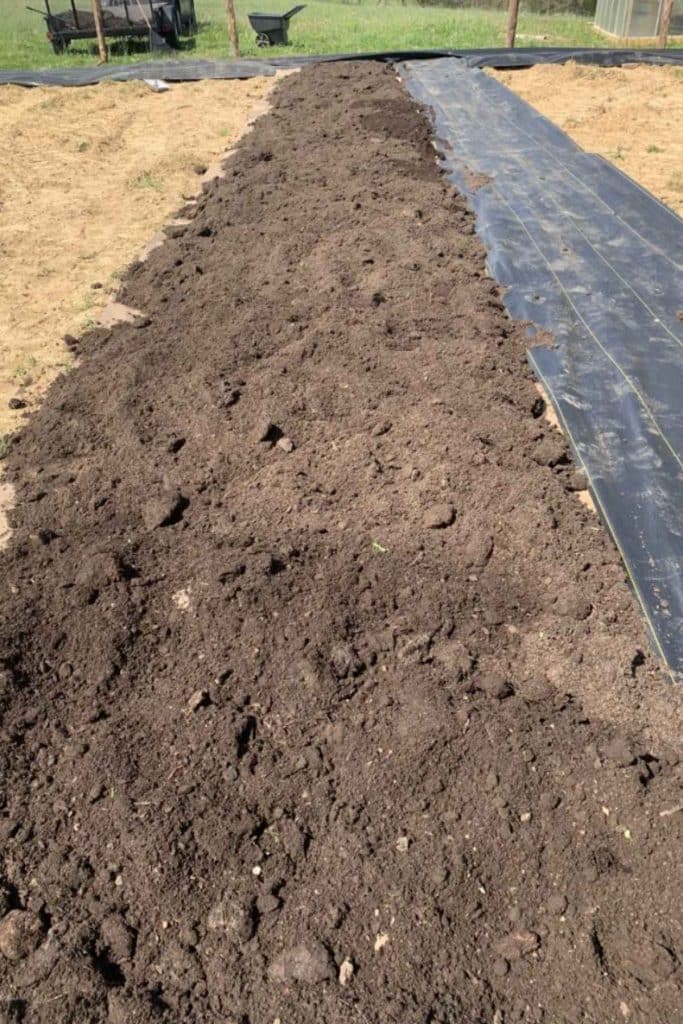

2. Sow your seeds and plant your seedlings into the soil. Once the plants have emerged, pull the hay back up around the plants to suppress weeds.
3. Wait until harvest time and reap the reward for your limited work!
You may be thinking that this method sounds too easy to work, but it really does work very well once established! The key is again, the thickness of the mulch. If you have weeds coming through the mulch is not thick enough.
Ruth Stout does recommend that if it is your first year gardening in poor soil, to give your garden a jump start by tilling in composted animal manure to boost the soil quality.
Common Challenges and Solutions to No Till Gardening:
Just like with any other method, there will be challenges along the way. Rest assured though that this method is pratically fool proof so long as you adapt it for your region.
This method was created in the northern part of the United States on Stout’s farm in Connecticut, but many have employed this method around the world in many different climates with a few minor tweaks:
Not Enough Rainfall:
If you live in the desert or in a dry arid climate without much rainfall, you may still have to water your garden occasionally. You should still be able to water less frequently because the thick mulch will retain moisture and slow down the evaporation process.
Poor or Rocky Soil:
Our farm has incredibly rocky clay soil that is hard to till or plant in. To avoid excessive tilling and improve soil health, I lay down a layer of cardboard directly on top of the ground and then cover that cardboard in 6 inches of composted animal manure.
Then, I apply a thick layer of mulch on top of the manure. This gives me a soft, fertile soil to plant directly into without having to deal with my native rocky soil underneath.
Excessive Weed Seeds:
Similar to the last point, sometimes a barrier is needed between the ground and the mulch to knockdown weed seed germination. For this reason, I like to layer a thick layer of cardboard directly on top of the ground in my garden beds before adding the mulch hay.
If you start this process in the summer or fall before the next planting season, you won’t need to purchase additional manure or soil to go on top of the cardboard. Simply remove all glue and tape from the cardboard, lay it flat in a continual layer and wet the cardboard to begin the breakdown process.
Layer on at least 8 inches of thick mulch and your garden plot will be ready to plant in by spring. This process buries the existing weed seeds in your native soil deep enough they can’t germinate and access light.
No Access to Unsprayed Hay:
If you don’t live in an area where hay is readily available, or you can only source hay that has been sprayed with herbicides or pesticides, don’t worry! A thick mulch of any vegetable matter will work as a mulch.
You can source things like wood chips, straw bales, pine needles, grass clippings and even leaves. Each different type of mulch brings different pros and cons to the equation, but they will all work to provide a deep mulch layer that retains moisture and prevents unwanted weeds from growing.
Sourcing Natural Mulch:
As mentioned above, many different kinds of mulch can be used in a Ruth Stout System. While not extensive, this is a sample list of easy to find natural mulches and how you can source them for cheap or free:
- Leaves: Fallen leaves can be raked up at the end of the season and layered throughout the whole garden or in a raised bed. Your neighbors will most likely be perfectly happy to have you rake their leaves for free if you need more than what you can find in your yard. Also, keep an eye out for bags of leaves on the side of road during the fall.
- Pine Needles: Similarly to leaves, pine needles can be raked up at the end of the summer and early fall to be used the following year. Some say pine needles add too much acidity to the soil and to use them sparingly, but I used pine needles exclusively for years with no problems.
- Bales of Straw: Many farms sell bales of straw for fall decorations. Consider checking with local farms after Halloween for an end of the season discount. Straw is not as good as hay for mulch because it is essentially the waste product of cereal crops and doesn’t have the same amount of nutrients as hay. Straw also doesn’t break down as well as hay, so it doesn’t feed the soil the same way. Despite its drawbacks, straw does provide a thick mat that will retain some moisture and block weeds. Straw also contains less seeds than hay, cutting down on accidental seeds.
- Hay: No matter if it is top quality or spoiled hay, hay is a premier mulch option. Hay is full of nutrition, breaks down easily, is light enough to plant in and yet thick enough to suppress weed growth. Consider going straight to the source and find a local farmer to purchase hay from for the best deal and top quality. Be sure the hay has not been sprayed with any herbicides or pesticides; more on that later.
- Grass Clippings: If you have a bagger attachment on your lawn mower or some extra free time, consider raking up grass clippings to use as a free mulch for your garden. Much like hay, grass makes an excellent mulch. For the best results use grass clippings from yards that have been mowed regularly (i.e. before the grass has time to form a seed head) to cut down on unwanted weed seeds.
Things to Consider When Using Hay as Mulch:
Hay is what Ruth Stout used in her garden for mulch, but there are a few things to think about before purchasing hay for your garden. The first and most important thing to think about is: Has the hay been sprayed or treated with anything?
Many farmers use a herbicide called Grazon to control certain weeds in their pastures. The problem with products like this is that they can kill lots of different vegetable plants such as potatoes, tomatoes, peppers and more.
To make matters worse, products like Grazon can live in the soil for several months making the area unusable for gardening for a very long time.
Spoiled hay, old hay or “junk” hay as some call it is perfect for the garden. Spoiled hay is simply hay that is unsuitable for animal consumption due to moisture, mold or low nutrient value.
While it may not be good enough for Bo Peep’s flock, spoiled hay is perfect for the garden because it is already in the process of breaking down, meaning it will feed your soil even sooner. As a bonus, spoiled hay is often even cheaper making it a great economical mulch.
Consider buying hay directly from the farmer instead of big box farm stores for a better price point and better quality control.
Ruth Stout Gardening in Real Life:
Read all about how I used a modified version of a Ruth Stout system to grow potatoes the lazy gardener way! My Ruth Stout garden beds produce an abundance of potatoes with very little work every single year. Lazy gardening is totally possible, and we have Ruth Stout to thank!


Sweet onions grown in a Ruth Stout style garden mulched with wood chips and hay:

Watermelon vines growing in a Ruth Stout raised bed mulched with pine needles:
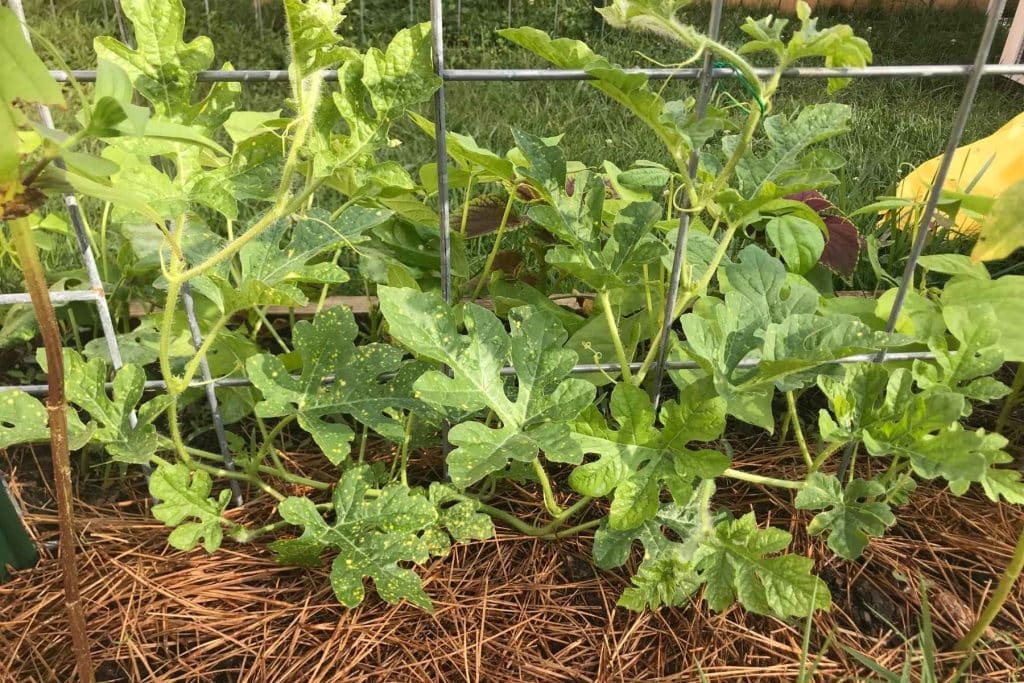
Ruth Stout style raised bed mulched with hay:

